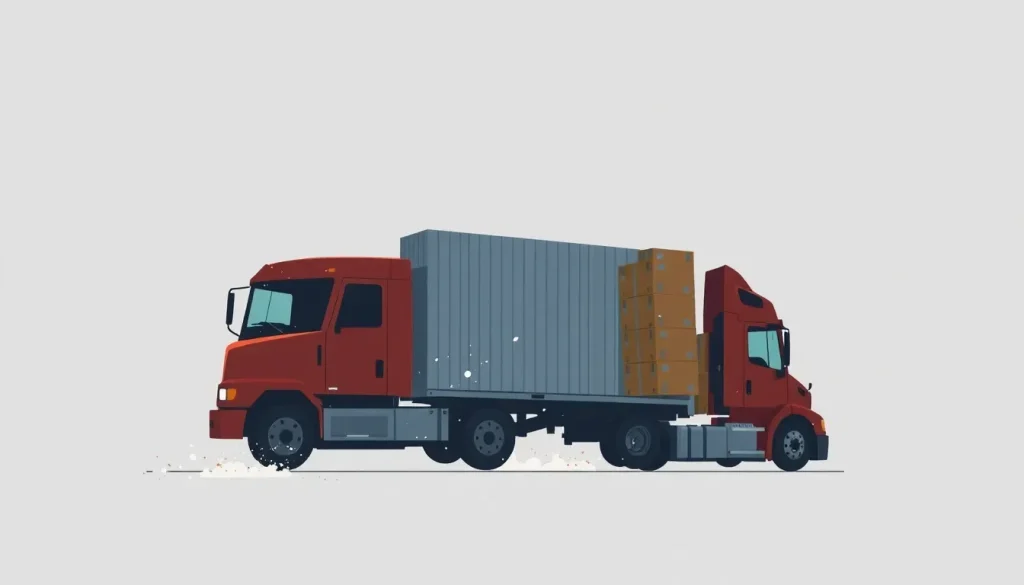Cargo thefts exceed 111 million dollars in New York metro area

The rising tide of cargo theft has become a pressing concern for businesses and law enforcement alike, prompting a closer examination of the methods employed by criminals in this illicit trade. In particular, the New York metropolitan area has emerged as a critical hotspot for these activities, reflecting broader trends across the United States and Canada.
This overview delves into the alarming statistics surrounding cargo theft, the sophisticated tactics adopted by criminal networks, and the measures that can be taken to safeguard valuable shipments.
- Cargo theft statistics: A worrying trend
- The role of organized crime networks
- Simple and complex tactics employed by thieves
- The rise of impersonation tactics
- Shifting patterns in cargo theft commodities
- The need for collaborative defense strategies
- Conclusion: A call to action for supply chain stakeholders
Cargo theft statistics: A worrying trend
In the third quarter of 2025, cargo thieves managed to steal nearly US$111.88 million worth of goods across North America, with the New York metropolitan area leading this troubling trend. According to CargoNet, a total of 772 cargo theft incidents were recorded during this period, marking a 1% increase from the previous year, although this represents a 10% decline from the second quarter of 2025.
The significant rise in financial losses is attributed to the targeting of high-value items, including:
- Enterprise computer hardware
- Cryptocurrency mining equipment
- Copper and other metals
In New Jersey, theft incidents surged by an astonishing 110% year-over-year, while Pennsylvania saw a 33% increase. In contrast, states like California and Texas, historically known for high theft rates, experienced more modest rises of 11% and 12%, respectively.
The role of organized crime networks
Keith Lewis, vice president of operations at CargoNet, emphasized that the NYC metro area has become a prime target for organized crime groups, which are taking advantage of the region's extensive logistics network and its proximity to major consumer markets. These networks are increasingly refining their methods to evade anti-fraud measures, resulting in a notable shift in the average value of stolen shipments.
In fact, the average value of a stolen cargo shipment soared to US$336,787, nearly double the US$168,448 recorded in the same quarter of the previous year. This trend indicates that criminals are becoming more selective in their targets, opting for high-value freight.
Simple and complex tactics employed by thieves
The tactics employed by cargo thieves are evolving, with some groups reverting to simpler methods, while others are adopting more sophisticated strategies. For instance:
- Some criminals now focus on stealing loaded trailers that are left unattended, especially in areas with high traffic like Southern California, the Bay Area, and Phoenix.
- Others have turned to social engineering techniques, impersonating brokers or dispatchers to redirect legitimate shipments to fraudulent addresses.
This dual approach illustrates the adaptability of criminal organizations, as they exploit vulnerabilities in the supply chain. As anti-fraud measures become more robust, these networks continuously innovate their tactics to stay ahead of law enforcement.
The rise of impersonation tactics
CargoNet has highlighted that many existing anti-fraud systems primarily monitor the initial tender phase of shipments. This oversight leaves a significant blind spot once the load is in transit, creating opportunities for impersonation and data harvesting.
As the sophistication of criminals increases, the expectation is that these impersonation tactics will become even more prevalent. Thieves are increasingly using public load boards to gather information on high-value shipments, enabling them to execute their schemes with greater precision.
Shifting patterns in cargo theft commodities
The types of commodities being targeted in cargo theft have also shifted dramatically. Recent data shows a dramatic increase in specific categories:
- Meat and seafood thefts surged by 189%, rising from 18 incidents to 52.
- Copper theft incidents increased nearly fivefold, from 10 to 47.
- Food and beverage loads accounted for the most thefts, totaling 170 incidents, followed by household goods (92) and metals (65).
These shifts highlight the need for enhanced security measures across various sectors of the supply chain, as thieves adapt their strategies to target the most lucrative commodities.
The need for collaborative defense strategies
As the tactics employed by cargo thieves continue to evolve, experts agree that the response must also adapt. Keith Lewis stresses the importance of a collective defense approach in addressing these challenges. This includes:
- Industry-wide collaboration to share information about theft patterns and trends.
- Developing advanced security measures to protect shipments throughout the logistics chain.
- Training personnel to recognize and respond to potential security threats.
By fostering a culture of vigilance and cooperation, businesses can better safeguard their cargo from the increasing threat posed by organized crime.
Conclusion: A call to action for supply chain stakeholders
The surge in cargo thefts and the evolving tactics employed by criminals underscore the urgent need for businesses to enhance their security measures. By understanding the landscape of cargo theft and collaborating across the industry, stakeholders can develop more effective strategies to protect valuable shipments and mitigate losses.




Leave a Reply